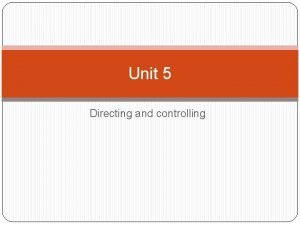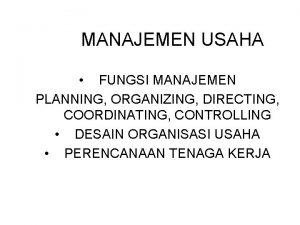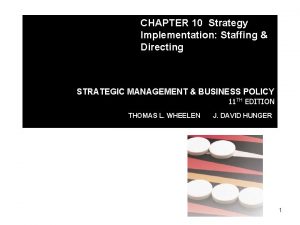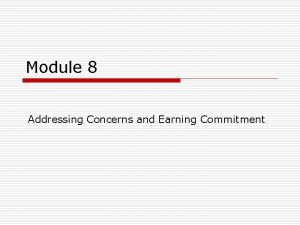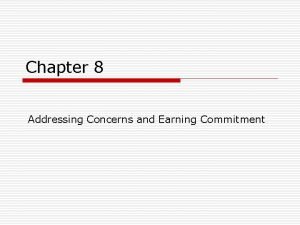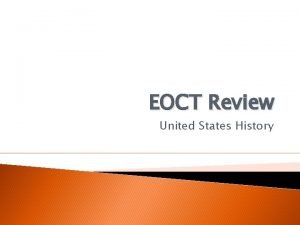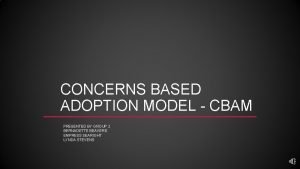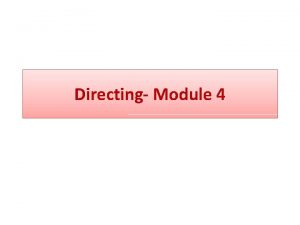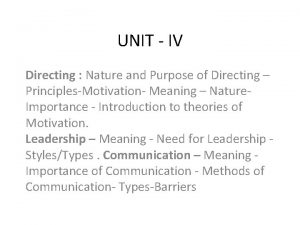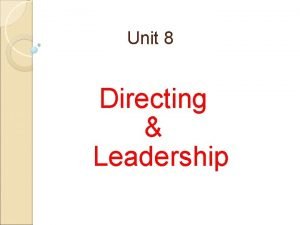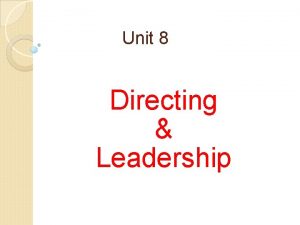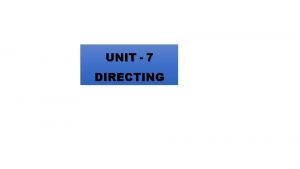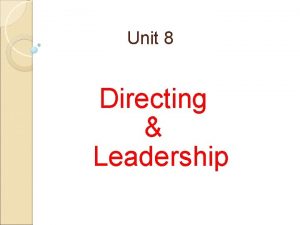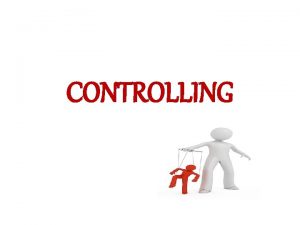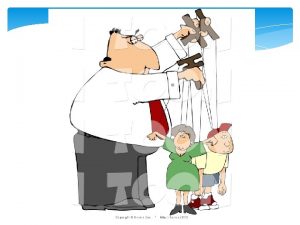Unit 5 Directing and controlling Directing concerns the

















- Slides: 17

Unit 5 Directing and controlling

Directing concerns the total manner in which a manager influences the actions of his subordinates. It is the final action of the manager in getting others to act after all preparations have been completed.

Essentials of Direction The essentials elements of Directing function are as follows 1. Issuing orders and instructions 2. Guiding, counselling and teaching the subordinates the proper way of doing the job 3. Supervising the work of subordinates 4. Motivating the subordinates 5. Maintaining discipline and rewarding performance

Principles of Direction The Principles of Direction are as follows 1. Harmony of objectives 2. Unity of command 3. Unity of direction 4. Direct supervision 5. Democratic leadership 6. Follow up

Nature/Features of Direction 1. Deals with people 2. Seeks performance 3. Provides a link 4. Pervasive 5. Dynamic and continous

Importance if Directing Direction is a vital management function 1. Initiates action 2. Achieves integration 3. Motivates people 4. Facilitates change 5. Attains balance and stability

CONTROLLING George Terry “Controlling is determining what is being accomplished ie. , evaluating the performance and if necessary, applying corrective measures so that the performance is in line with the plan”

Purpose/Benefits of Control 1. Adapting to changing conditions 2. Minimizing the errors 3. Coping with organizational complexity 4. Minimizing costs

Steps in the Control process The control process consists of four fundamental steps 1. Establish standards 2. Measure performance 3. Compare performance with standard 4. Corrective deviations

The Control Process Draw diagram on Pg. 199 Establish Standards Measure Performance Compare performance with standards Determine deviation Planning, actuating and organising Within limits No action is and continue the required process

Types of Control 1. Pre-control or feed forward control 2. Steering control 3. Yes/No control 4. Post control 5. Current control

Control techniques Budgetary and Non Budgetary Control Techniques To submit Assignment

CO-ORDINATION “Co-ordination is defined as the process of bringing about unity and harmony in the functioning of all departments which are involved in organizations”

Types of Co-ordination 1. Internal co-ordination a. vertical co-ordination b. Horizontal co-ordination 2. External co-ordination

Problems of Co-ordination 1. Natural hinderances 2. Lack of administrative talent 3. Lack of techniques of co-ordination 4. Ideas and objectives 5. Misunderstanding

Need and Significance of Coordination 1. Group efforts 2. Unification of activities 3. Interdependence of activities 4. Interdependence of work units 5. Integration of goals 6. Key to other managerial functions 7. Resolution of conflicts 8. Harmonizing organizational flow

Principles of Co-ordination 1. Early start 2. Direct contact 3. Reciprocal relationships 4. Continuity
 Planning and staffing
Planning and staffing Directing and controlling
Directing and controlling Staffing and directing
Staffing and directing Directing controlling
Directing controlling Function of management
Function of management Staffing and directing
Staffing and directing Planning organizing leading controlling
Planning organizing leading controlling Addressing concerns and earning commitment
Addressing concerns and earning commitment Addressing concerns and earning commitment
Addressing concerns and earning commitment Joys and concerns
Joys and concerns Joys and concerns prayer
Joys and concerns prayer Joys and concerns images
Joys and concerns images Cross-cutting concerns
Cross-cutting concerns Software design separation of concerns
Software design separation of concerns The network layer is concerned with of data
The network layer is concerned with of data What happened in 1777
What happened in 1777 Lumi sps
Lumi sps Concerns based adoption model
Concerns based adoption model

